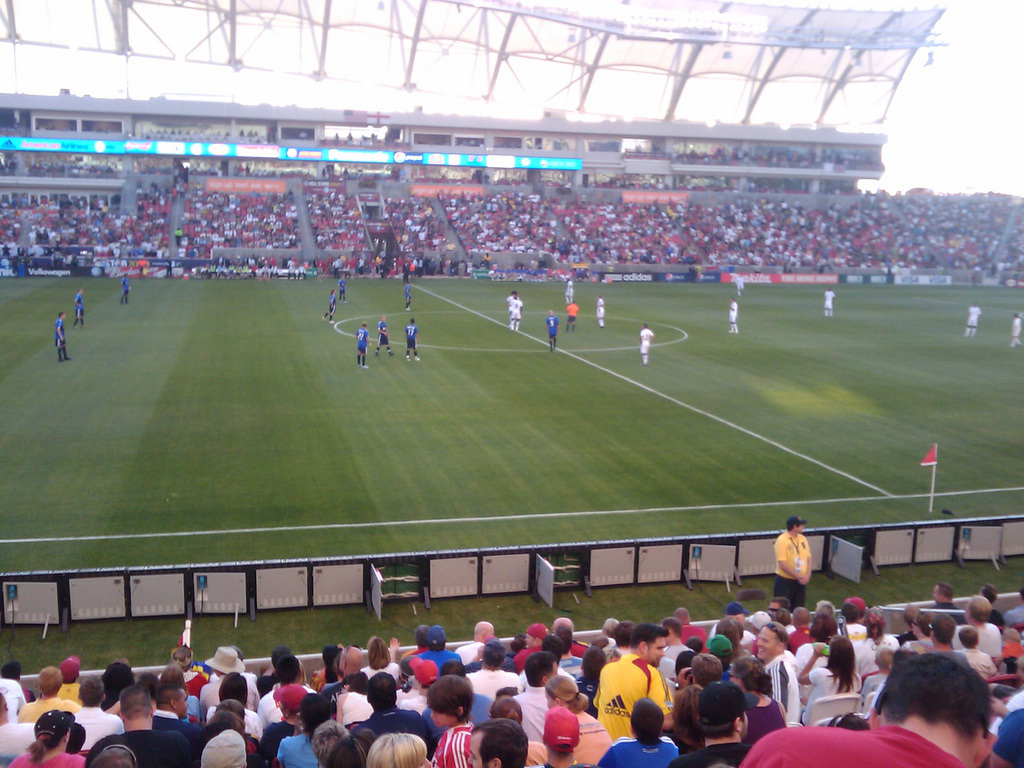| If you’re reading this from somewhere along the Wasatch Front, you’re part of the hottest spot for soccer in the United States. That’s according to Wallethub.com, which just released its rankings for 2015’s best and worst cities for soccer fans. Salt Lake City (which obviously includes the metro area) ranked No. 1, followed by Mansfield, Conn., and Conway, S.C. Cities were ranked if they had any college or professional team. Surprisingly, Seattle, perhaps the hottest market in Major League Soccer, came in sixth. |
| | Salt Lake benefitted from the solid on-field performance of its MLS team, Real Salt Lake, as well from having friendly and engaged fans, as measured by the number of Twitter followers and Facebook likes per capita. It’s dangerous to put too much weight on surveys such as these. They have value, however, as a snapshot of popularity or trends. It is safe to say Dave Checketts was onto something a decade ago when he invested in a franchise in Utah — a state filled with returned Mormon missionaries who served in soccer-crazed countries, a rising population of Hispanic immigrants and lots of children who play youth soccer. He also obviously foresaw the rising curve of soccer’s popularity nationwide. He also knew the franchise wouldn’t set down roots, and his investment wouldn’t give him maximum returns upon sale, without a taxpayer-sponsored stadium. I was an ardent opponent of the taxpayer part of that plan. Still am. A portion of Rio Tinto Stadium was funded by Salt Lake County’s tourism tax — a levy applied to all hotel room rentals in the county. Quite simply, a soccer stadium was not a proper use for such a tax, nor is enriching one business a proper use of any tax. RSL’s success is tied to the stadium, which is undeniably beautiful. Attending a game is an enjoyable experience ideal for families. A lot of things in life are good and worthwhile, but not a proper thing for taxpayers to be forced to fund, especially in light of other needs. But the stadium’s funding is old news now. Soccer’s rise is news today. It should be kept in perspective, however. According to Wallethub, it still ranks “eighth out of the 10 most followed sports by American adult fans.” It’s hard to deny, however, that the trend is upward, and perhaps significantly so. The website socceramerica.com reports that MLS is on the way toward smashing its attendance records, with 10 teams now averaging more than 20,000 fans per game. Although the league plays many fewer games than the NBA, many cities, including Salt Lake, sell more soccer tickets than NBA tickets on a per-game basis. Significantly, in light of its No. 1 ranking, RSL comes in 10th in the league with a 20,059 average, and that’s actually a 1 percent decline over last season. However, it still represents nearly a sellout for each match. Americans are increasingly crazy about sports, fueled by many sports television and radio networks. Spectator sports can be a healthy diversion from everyday life. They also can distract us from problems that need fixing and, at its worst, they can allow athletes to get away with criminal activity (as seen on some college campuses). They also are not economic engines in the communities they serve. A number of studies bear this out. Economists Andrew Zimbalist and Roger Noll demonstrated this wonderfully in their book, “Sports, jobs & taxes: Are new stadiums worth the cost?” Americans seldom pause to think about such things, however. Soccer may, as Edward M. Kian of Oklahoma State University muses on the Wallethub site, surpass Major League Baseball in 30 to 40 years. That puts the Wasatch Front on the ground floor of a growing movement, whatever that’s worth. It may result in some tourism benefits as the team’s performance raises awareness of the area, or not. It certainly will be good for fans. But then, baseball’s popularity may rise, as well, along with all the other sports. The willingness of Americans to spend money on games seems to be boundless. Unfortunately, that includes a willingness to spend other people’s money as well, through taxes. |


 RSS Feed
RSS Feed

